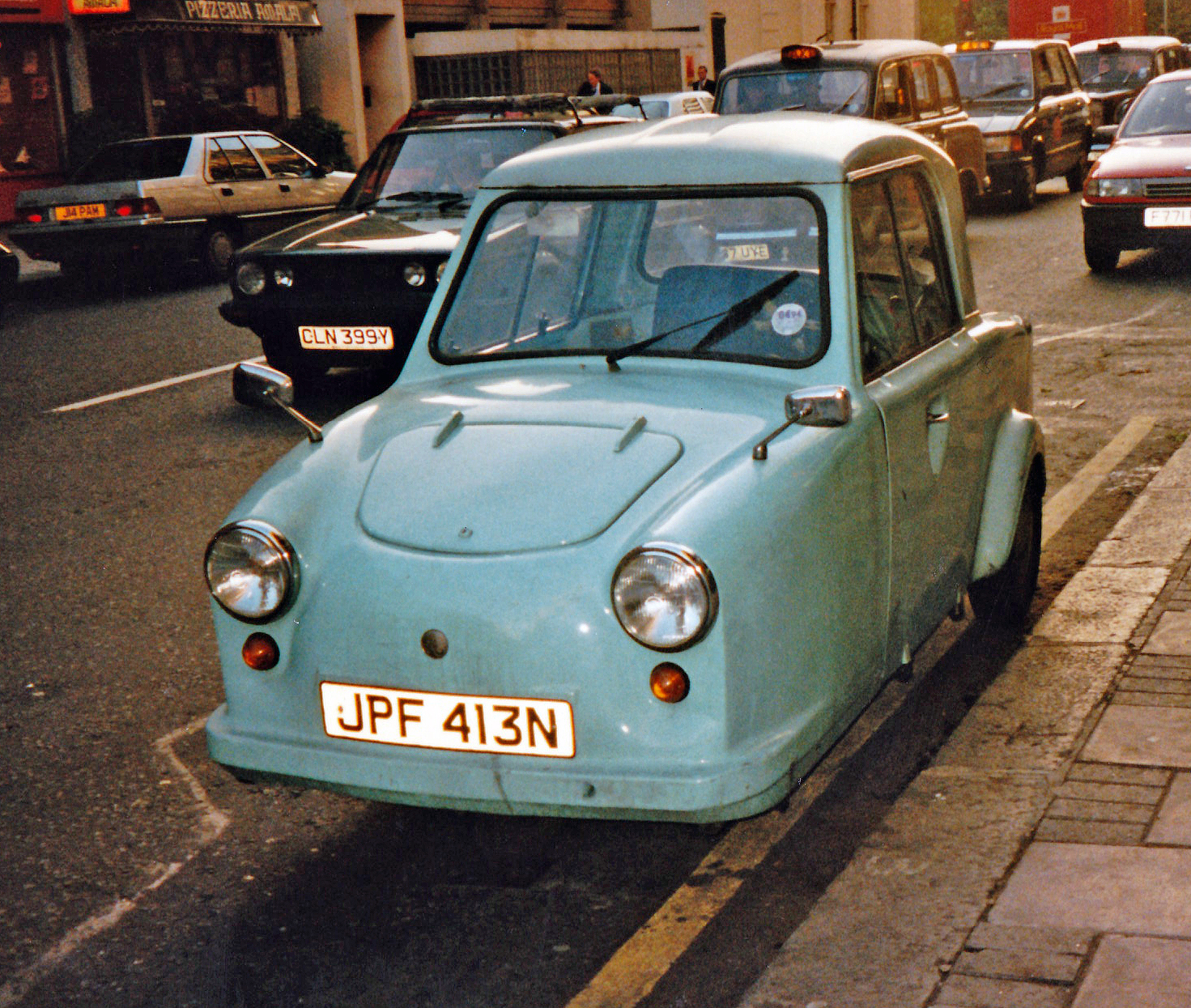They were the forerunner of today’s larger mobility scooters and once a familiar sight on Britain’s roads. But whatever happened to the light blue ‘Invacars’ that were the primary means of transport for thousands of disabled people?
The motorised tricycles that were known generically as Invicars were actually supplied by a number of manufacturers. The Thundersley and AC Invacar were the most popular models and, by their peak in the mid 1970s, it was estimated that there were more than 21,000 of them in use. Constructed with a fibreglass shell on a trike chassis, the Invacar disappeared at a stroke on March 31, 2003 when they were banned from use on UK roads because of safety fears. Virtually all the surviving vehicles were recalled and crushed although a number still survive in museums and in private ownership.
The origins of the Invacar date back to the Atlee Labour government of 1945 after the end of the Second World War. There were so many injured former servicemen and other people made disabled by war service, that the administration decided to set up a scheme to help them become more mobile.
The first motor-driven tricycle was launched by Bert Greeves, the founder of Invacar, in 1946 and the Ministry of Health supplied and repaired the vehicles free of charge to those eligible. Each car was painted in ice blue and powered by a 500cc or 600cc Steyr-Puch engine With a top speed of between 40mph and a terrifying 80mph - giving it the power-to-weight ration of a BMW M5 - the Invacar was designed for use by one person, had a tiller instead of a steering wheel and had stowage space for a single folding wheelchair. There were designed to sit high off the ground with wide-opening doors to make it easy for somebody to get in and out of. To handle the demand for the free vehicles, the government created the forerunner of today’s Motability scheme. Administered by the NHS, it was designed as a service for disabled people to gain independence. It proved incredibly popular and when the scheme closed in 1976, there were still more than 20,000 in everyday use.
Sir Bert Massie, one of the governors of today’s Motability scheme, told the BBC in 2013: “The government didn't see these as cars... they saw them as a prosthetic. There was a strange logic to their thinking. They saw the role of the NHS as being there to get you mobile. If you were not disabled, you'd be doing that with your legs. So, if you were disabled, and couldn't do that, they gave you a one-person invalid carriage as a leg replacement to get you from A to B.”
But safety fears were growing and the Ministry of Health was finding it difficult to continue to offer free maintenance. Furthermore, disability campaigners had been lobbying the government to allow disabled people to drive cars that could hold more than one person. Motability - which offered financial help for somebody to buy and adapt a mainstream car - was launched in the 1970s. Yet hundreds of people continued to use their Invacars despite the risks which were becoming widely known. Many of the fibreglass vehicles burst into flames and there were thousands of incidents in which they blew onto their sides in high winds. Production stopped in 1977 but it wasn’t until 2003 that the government ordered all of the remaining examples off Britain’s roads. Safety fears had won out and all the survivors were ordered to be destroyed. In the lead up to the ban, about 50 cars a week were being crushed. Sir Bert said: “I had a few go on fire on me, so you'd stop and other motorists would drag you out as the thing went up in flames.”
It’s unlikely that many mourn the Invacar’s passing although there are still some to be found on eBay and other auction sites even if a buyer would never be able to take them on a public road.

image credited from wikipedia
By Help Mobility Team